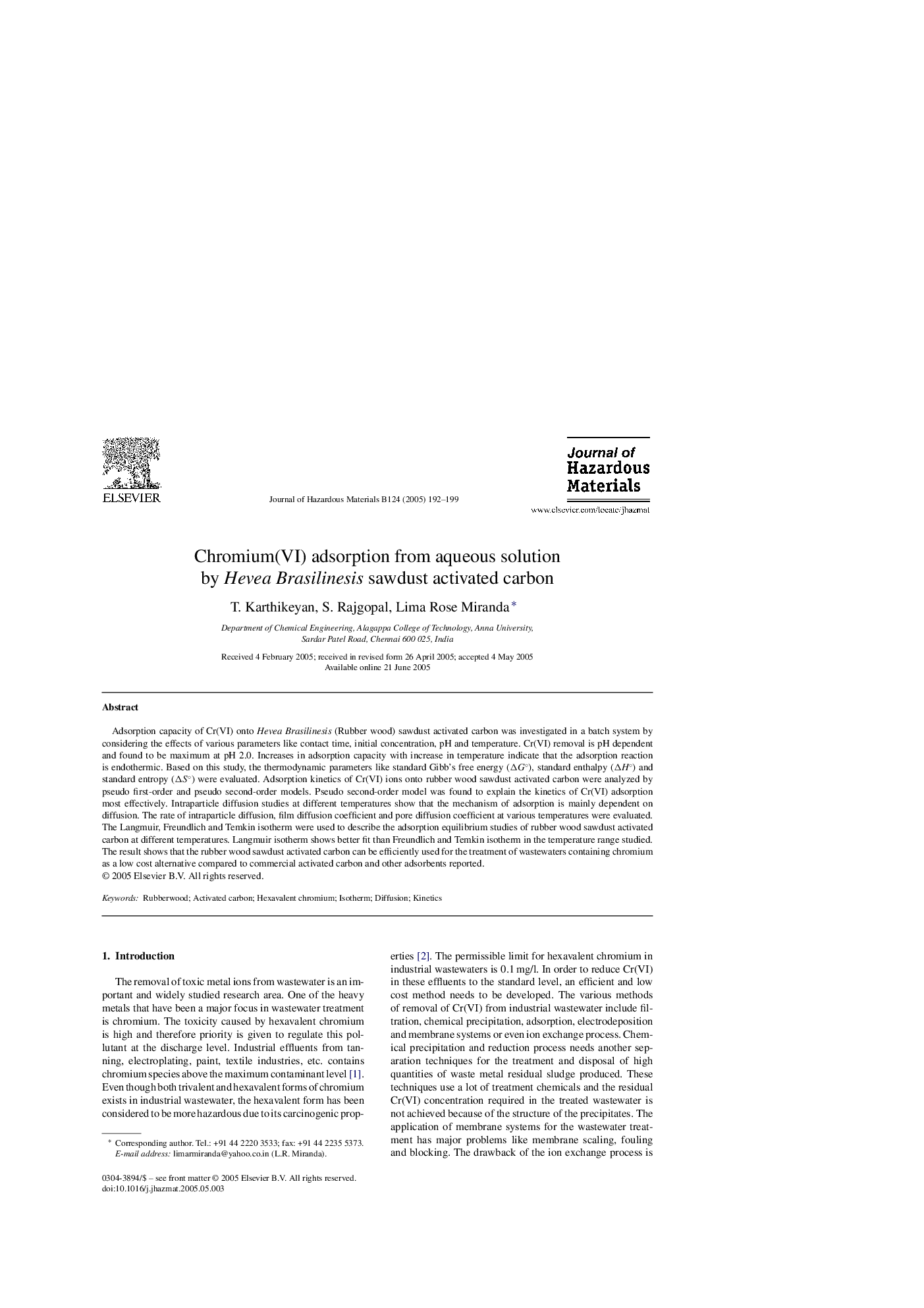| Article ID | Journal | Published Year | Pages | File Type |
|---|---|---|---|---|
| 9674178 | Journal of Hazardous Materials | 2005 | 8 Pages |
Abstract
Adsorption capacity of Cr(VI) onto Hevea Brasilinesis (Rubber wood) sawdust activated carbon was investigated in a batch system by considering the effects of various parameters like contact time, initial concentration, pH and temperature. Cr(VI) removal is pH dependent and found to be maximum at pH 2.0. Increases in adsorption capacity with increase in temperature indicate that the adsorption reaction is endothermic. Based on this study, the thermodynamic parameters like standard Gibb's free energy (ÎG°), standard enthalpy (ÎH°) and standard entropy (ÎS°) were evaluated. Adsorption kinetics of Cr(VI) ions onto rubber wood sawdust activated carbon were analyzed by pseudo first-order and pseudo second-order models. Pseudo second-order model was found to explain the kinetics of Cr(VI) adsorption most effectively. Intraparticle diffusion studies at different temperatures show that the mechanism of adsorption is mainly dependent on diffusion. The rate of intraparticle diffusion, film diffusion coefficient and pore diffusion coefficient at various temperatures were evaluated. The Langmuir, Freundlich and Temkin isotherm were used to describe the adsorption equilibrium studies of rubber wood sawdust activated carbon at different temperatures. Langmuir isotherm shows better fit than Freundlich and Temkin isotherm in the temperature range studied. The result shows that the rubber wood sawdust activated carbon can be efficiently used for the treatment of wastewaters containing chromium as a low cost alternative compared to commercial activated carbon and other adsorbents reported.
Related Topics
Physical Sciences and Engineering
Chemical Engineering
Chemical Health and Safety
Authors
T. Karthikeyan, S. Rajgopal, Lima Rose Miranda,
